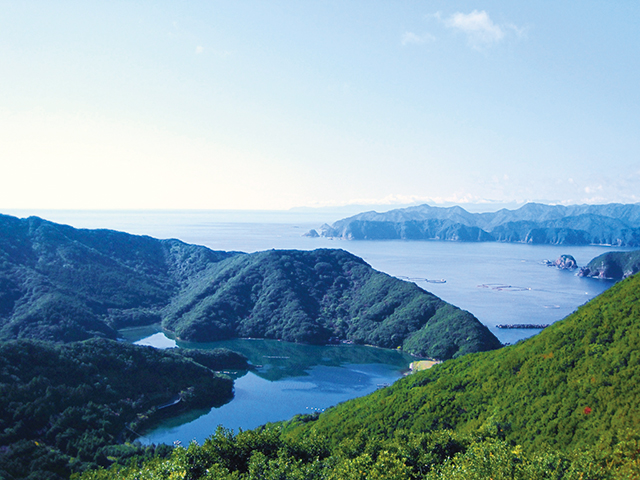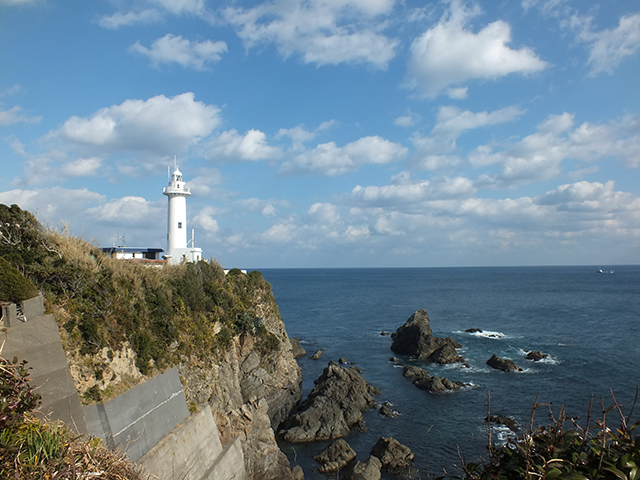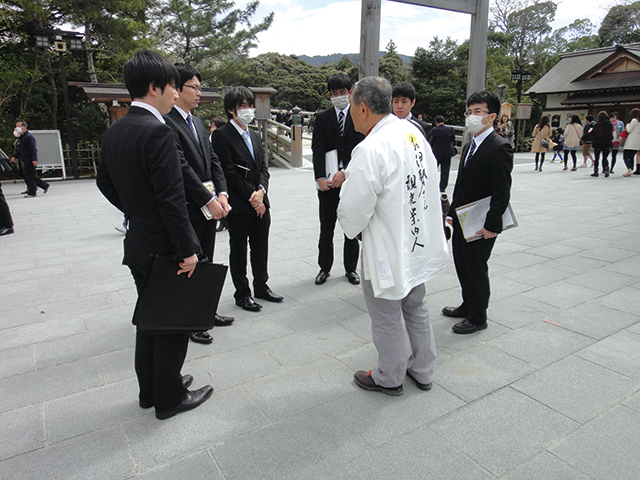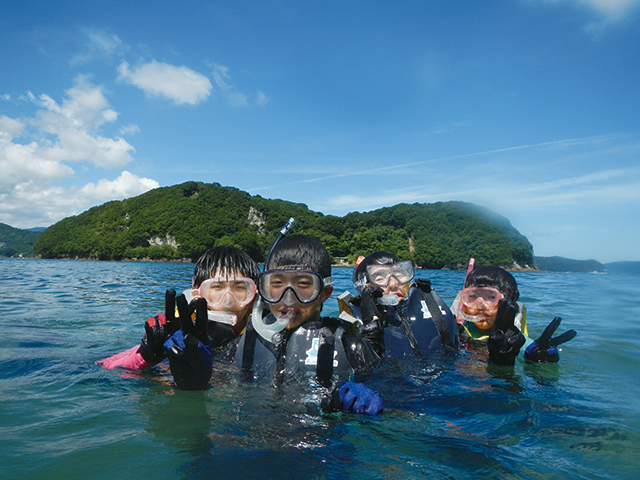- MOE
- National Parks of Japan
- Ise-Shima National Park
- Guide of Highlights
main body
Highlights of Ise-Shima National Park
Sightseeing Spots
Ise Jingu

Uji Bridge and Torii Gate
Ise Jingu
Through centuries, people have worshiped the sun as a deity. Ise Jingu is placed at the center of this belief and is composed of nearly 125 shrines centering on the inner shrine and outer shrine
Jingu-Kyuikirin Forest

Jingu-Kyuikirin Forest
Nearly 1,300 years ago, the area served as a place where the timber to build the Ise Jingu was sourced.So far, about 850 species of flora have been confirmed and the ongoing silvicultural management not only maintains the rich forest ecosystems for living creatures but also plays a role in preventing floods and other natural disasters.
Mt. Asama Observatory

Mt. Asama Observatory
The highest peak of Ise-Shima National Park is Mt. Asama (555 m above sea level), where visitors can appreciate a panoramic view of Shima Peninsula, Atsumi Peninsula, and Chita Peninsula in the distance as well as Mt. Fuji in winter.
Meoto Iwa Rocks

Meoto Iwa Rocks
Meoto Iwa Rocks (the Married Couple Rocks) have been known as a site to worship the sunrise from afar since ancient times. The sunrise can be seen between the two rocks of Meoto Iwa Rocks between May and July. Particularly, on days of good weather, and notably before and after the summer solstice, it is possible to see the sunrise with distant Mt. Fuji in the background.
Toba Observatory

Toba Observatory
It is an observatory situated on Mt. Hakoda just off of Pearl Road and affords views of the remote islands of Toba (including Sugashima Island and Kamishima Island) and Atsumi Peninsula across the bay.
Yokoyama Observatory

Yokoyama Observatory
Yokoyama Observatory commands a panoramic view of Ago Bay, famous for pearl culturing. An intricately indented ria coastline and pearl-culture rafts on the water combine to form a landscape that depicts the harmony of human activity incorporated effectively into the natural environment.
Tomoyama Park

Tomoyama Park
The premises covering an area of about 100 ha are equipped with campgrounds, open space with grass, athletics and swimming beach to experience various nature-focused activities.
Ria Coast

Ria Coast
Small bays of complex topology and deep inlets such as Ago Bay, Matoya Bay, Gokasho Bay, and many large and small islands such as Kamishima Island, Tosejima Island, Sugashima Island, create a delicate and refined beauty.
Nankai Observatory

Nankai Observatory
Situated on a summit facing Gokasho Bay, this observatory affords views of deeply indented inlets in Gokasho Bay, an inland sea-lake (Oike) in Oukaura, and the Odai Mountain Range in the distance.
Ugura Garden

Ugura Garden
Situated at 191 m above sea level, this observatory overlooks ria coastlines and heart-shaped bay.
Kinki Nature Trail

Kinki Nature Trail
Route from Anori to KouAnorisaki affords a commanding view of the Pacific and Matoya Bay, as well as Mt. Fuji in a far distance on clear days. The south of Koushirahama is the Ago-no-Matsubara Beach famous for its beautiful stretch of sandy seashore dotted with pine trees.

Route from Kouka to Azena
This route is dotted with numerous ruins and ancient burial mounds.
As this sandy beach has a depth compared to other beaches in the Ise-Shima area, it is a spawning region of loggerhead turtles and the local people actively engage in conservation efforts.
This route is dotted with numerous ruins and ancient burial mounds.
As this sandy beach has a depth compared to other beaches in the Ise-Shima area, it is a spawning region of loggerhead turtles and the local people actively engage in conservation efforts.

Route from Nakiri to Katada
The Daiozaki Lighthouse and surrounding architectural structures, which have long been a favorite place of many local painters, are the sites to discover a distinct landscape facing the Pacific Ocean and provide an insight into a way of living that is harsh, yet in harmony with nature.
The Daiozaki Lighthouse and surrounding architectural structures, which have long been a favorite place of many local painters, are the sites to discover a distinct landscape facing the Pacific Ocean and provide an insight into a way of living that is harsh, yet in harmony with nature.
Wildlife & Plants
Crinum asiaticum L. var. japonicum

Crinum asiaticum L. var. japonicum
A member of the licorice. In Japanese, it is called "hamayu" or "white cloth of the beach" and is found in coastal areas. The appearance of the flower resembles a white cloth (yu) used in Shinto devotions, and therefore, it is sometimes referred to by this name.
Hibiscus hamabo

Hibiscus hamabo
A species of the hibiscus family. Found in the area from western Japan to Jeju Island in South Korea, and as far as Amamiooshima Island. A halophilous plant found in basins and on coastal areas. Blooms with yellow flower reminiscent of Polynesia.
Loggerhead Turtle (Caretta caretta)

Loggerhead Turtle (Caretta caretta)
Found in the Atlantic Ocean, Pacific Ocean, Indian Ocean, and Mediterranean. In Japan, the loggerhead turtle lays eggs in the Noto Peninsula and sub-Kashimanada. The loggerhead turtle has been found coming ashore, and laying eggs on sand beaches at various locations in the Ise National Park.
Activities
Ise-Shima National Park Eco Tour
Ise-Shima National Park Eco Tour
Ise-Shima National Park is home to a vast array of eco-tours to interact with the area's abundant nature and distinct culture from the experience of harvesting the bounty of the seashore; strolling through abundant nature, agriculture and forestry experience; and exploring remote and uninhabited islands.The eco-tours are broadly offered in the following fields:
Ise Field

Ise Field
Centering around the Ise Jingu, a guided tour is offered by volunteers and local people alike. Visitors can learn not only about ancient knowledge related to Oise-san, but also are offered an unforgettable experience of a lifetime.
Minami-Ise Field

Minami-Ise Field
In the backdrop of nature and culture found in Minami-Ise, local farmers, fishers, and forest workers get together to offer the experience of boat fishing and Mandarin picking to feel the symbiosis of local people with the vast wilderness of Minami-Ise.
Shima Field

Shima Field
The islands off Shima are famous for the ria coastline of Ago Bay and abundant nature. Visitors can choose from an array of nature experience programs such as sea kayaking, cycling, and a water ball that floats on the water.
Toba Field

Toba Field
There are four habited remote islands situated over its complex coastline off the waters of Toba where visitors can participate in eco-tours to experience the nature of the sea, livelihoods, and culture found in a fishing village.

